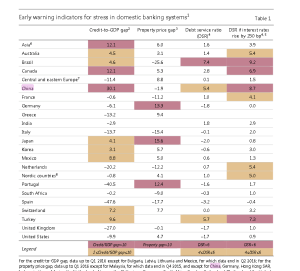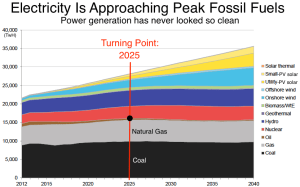Perspective
Economist – The super-rich are different: they pay less tax 6/1
Visual Capitalist – The Problem With Our Maps – Nick Routley 6/2
Worthy Insights / Opinion Pieces / Advice
FT – Grantham says higher valuations will persist – Robin Wigglesworth 6/1
- “The US stock market has entered an era of higher valuations and probably has further room to rise, according to Jeremy Grantham, the founder of asset manager GMO and a known bearish spotter of financial bubbles.”
- “Mr. Grantham, a notoriously bearish ‘value investor’ who correctly called and dodged the Japanese, dotcom and housing bubbles, sees little to worry him in the US market today. Expressing a preference for emerging market equities to US stocks, GMO’s founder points to seemingly durable pillars of healthy corporate profits, low interest rates and any lack of euphoria.”
- “’I’ve dedicated my life to financial bubbles, and I don’t think it is a bubble,’ he told the Financial Times. ‘This is the broadest market of all time . . . That is not the nature of a bubble.’”
- “Moreover, the normally bearish investor — who has built much of his career on the observation that market levels ultimately tend to revert to their long-term average — has even reluctantly conceded that US share prices may have shifted durably to a higher level since the late 1990s.”
- “He laid out the case for why ‘this time seems very, very different’ in his quarterly letter to investors, pointing out that despite some wild swings in recent decades — caused by the dotcom bubble and subsequent crash, and then the global financial crisis — US price-to-earnings have averaged over 23 times since 1997, compared with nearly 14 times in the preceding decades, when he started his career.”
- “The central reasons are globalization increasing the earning power of US multinationals, the growing political influence of American corporations and more onerous regulations stifling the growth of disruptive upstarts, in turn leading to increasingly monopolistic US companies, and above all a secular and durable decline in interest rates.”
- “Mr. Grantham admits his new tone gets ‘groans from fellow value investors’ where it has ‘rattled a lot of cages’, but argued that previously dependable rules have to be re-examined and some even cast aside, given that the ‘world has changed’.”
- “’You now have to treat previously cast-iron rules with suspicion. They’re more like aluminum rules now.’’’
Real Estate
WSJ – Daily Shot: John Burns Real Estate Consulting – US Investor Purchase Percentage 6/1
WSJ – Riksbank Chief Wants Swedish Government to Cool Red-Hot Property Market – Nina Adam 6/1
- “Sweden’s central bank governor Stefan Ingves said a red-hot housing market and record-high level of household debt will put the Scandinavian country’s economy in peril unless the government cools the property sector down.”
- “Swedish property prices have soared in recent years, fueled by low borrowing costs and strong economic growth. The Riksbank estimates that house prices have doubled and apartment prices have tripled over the past 10 years. At the same time, household debts have risen to 180% of disposable incomes, which is a record high.”
- “Goldman Sachs earlier this month attached about a 35% chance to a housing bust in Sweden over the next five to eight quarters.”
- “The Bank for International Settlements and others have warned that a long period of very low global interest rates could lead to a fresh cycle of boom and bust in housing markets. While that seems like a distant prospect in many parts of the world, Sweden may be an early test of how much has changed since the last financial crisis.”
Finance
NYT – In Texas, Some Rare Good News About Cities With Pension Woes – Mary Williams Walsh 6/1
- “Detroit. Stockton. Puerto Rico. The list of places bankrupted by ballooning pension obligations and other debts is growing. But now comes some good news about two cities, Dallas and Houston, that have pulled back from the brink.”
- “Just six months ago, the mayor of Dallas, Michael S. Rawlings, was warning that his city might need to declare bankruptcy after a panic led stampeding retirees to pull half a billion dollars out of its pension fund for police officers and firefighters.”
- “But instead of going to bankruptcy court, Mr. Rawlings went to Austin, the state capital, to lobby for state pension laws that would stop the bleeding. So did the mayor of Houston, Sylvester Turner, who faced other pension problems and had persuaded the city’s labor groups to agree to concessions worth $1.3 billion over the next 30 years.”
- “Each city had its own bill, because each had its own unique problems. But both bills involve measured reductions in pension accruals for workers and retirees — mainly in secondary benefit categories like inflation adjustments and lump-sum payouts. In exchange, the pension funds will receive more money from the cities to protect the core benefits.”
- “As happy as the resolution may seem, the steps that Texas took are illegal in other places where public pensions are imperiling the finances of cities and states. Illinois, California, Oregon, Pennsylvania and Kansas are among the states where, by law, public pensions cannot be reduced — not even the pensions that current workers hope to earn in the future.”
- “That doctrine, known as the California Rule, explains why California cities like Vallejo and Stockton reduced their payments to other creditors when they went into bankruptcy but did not touch their workers’ costly pension plans.”
- “Both cities were spurred to act by the risk of credit downgrades and by a recent accounting change that calls for cities to calculate the number of years before their pension funds will run out of money — a once-unthinkable catastrophe that has come to pass in Prichard, Ala.; Central Falls, R.I.; and now Puerto Rico.”
- “Those developments — and Detroit’s bankruptcy — have shown that Washington will not bail out government pension funds that go bust; officials had to patch together money from other sources, and even then, the retirees of Prichard, Central Falls and Detroit had their benefits cut. Cuts are expected soon in Puerto Rico, too.”
China
WSJ – Baidu’s Turn as a Bank Is Unwelcome – Jacky Wong 6/1
- “Everything is a bank in China these days it seems—even its biggest internet search engine.”
- “Eager to get a bigger slice of the pie, Baidu has been aggressively selling its own wealth management products. Assets in its financial services business had more than doubled to $3.7 billion by the end of March from three months previously, according to Fitch. It has also been offering microloans, many of them unsecured, to consumers who may be unable to borrow from banks.”
- “Fitch, rightly, is worried that Baidu is running the same risk as China’s banks: its aggressive selling of investment products and microloans could come back to bite the company if there is a wave of defaults. Baidu has around $5 billion of net cash to cover any losses. But with its core search business stagnant, investors shouldn’t welcome Baidu taking on such new risks.”
FT – Billionaire Anbang boss Wu Xiaohui barred from leaving China – Henny Sender and Lucy Hornby 6/2
Puerto Rico
- “The choice is heartbreaking: stay to help other families, or leave to help your own.”
- “That’s the calculation thousands in Puerto Rico are making. The bankruptcy of the U.S. commonwealth, the culmination of years of decline, has accelerated an exodus that’s adding to the island’s economic misery.”
- “The population drop is astonishing. The island has lost 2% of its people in each of the past three years. A comparable departure from the 50 states would mean 18 million people moving out since 2013. About 400,000 fewer Puerto Ricans live on an island of 3.4 million today compared with a decade ago, when its economy began contracting.”
- “The departures have trapped Puerto Rico in a downward spiral. A grinding recession, with joblessness at 11.5%, and $74 billion mountain of debt that pushed the island to insolvency has made collecting taxes key to an economic rebound. At the same time, more Puerto Ricans from all walks of life are moving away to better their lives, meaning government revenue is dwindling.”
- “Puerto Rico’s bond debt has grown 87% since 2006. A simple way for individual islanders to avoid having to pay it is to move to the mainland.”
- “The government doesn’t seem to have come to grips with the outflow. Puerto Rico’s turnaround plan — a path to sustainability approved by a U.S. oversight board — assumes the population will shrink just 0.2% each year for the next decade. It uses that number as the basis for its projections of tax receipts and economic growth.”
- Further, “the exodus isn’t confined to professionals. Among the throngs leaving are construction workers and taxi drivers. Research by the Federal Reserve Bank of New York found that college graduates make up roughly the same proportion of emigres as they do in the island’s general population, suggesting that the departures have touched every corner of the commonwealth.”
- “While migration is the main driver in population fluctuation, a declining fertility rate isn’t helping either. The natural population increase — excess births over deaths — fell to 3,000 last year from 20,000 a decade ago, as families facing poorer economic prospects and the threat of the Zika virus put off having kids. At the same time, younger generations of child-bearing age are more likely to take off for the mainland.”
- Seems like the only way to stop this trend is to make Puerto Rico a full-fledged state. Question is whether or not all the vested parties are willing to go along with it.
South America
WSJ – Daily Shot: Brazil GDP 6/1




















































































